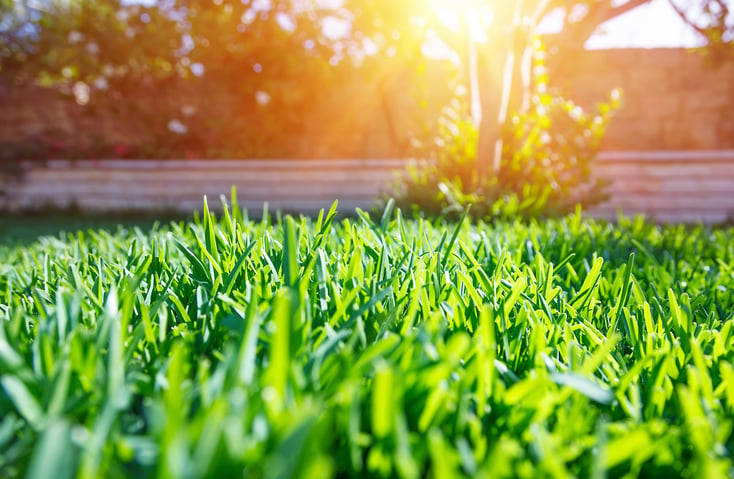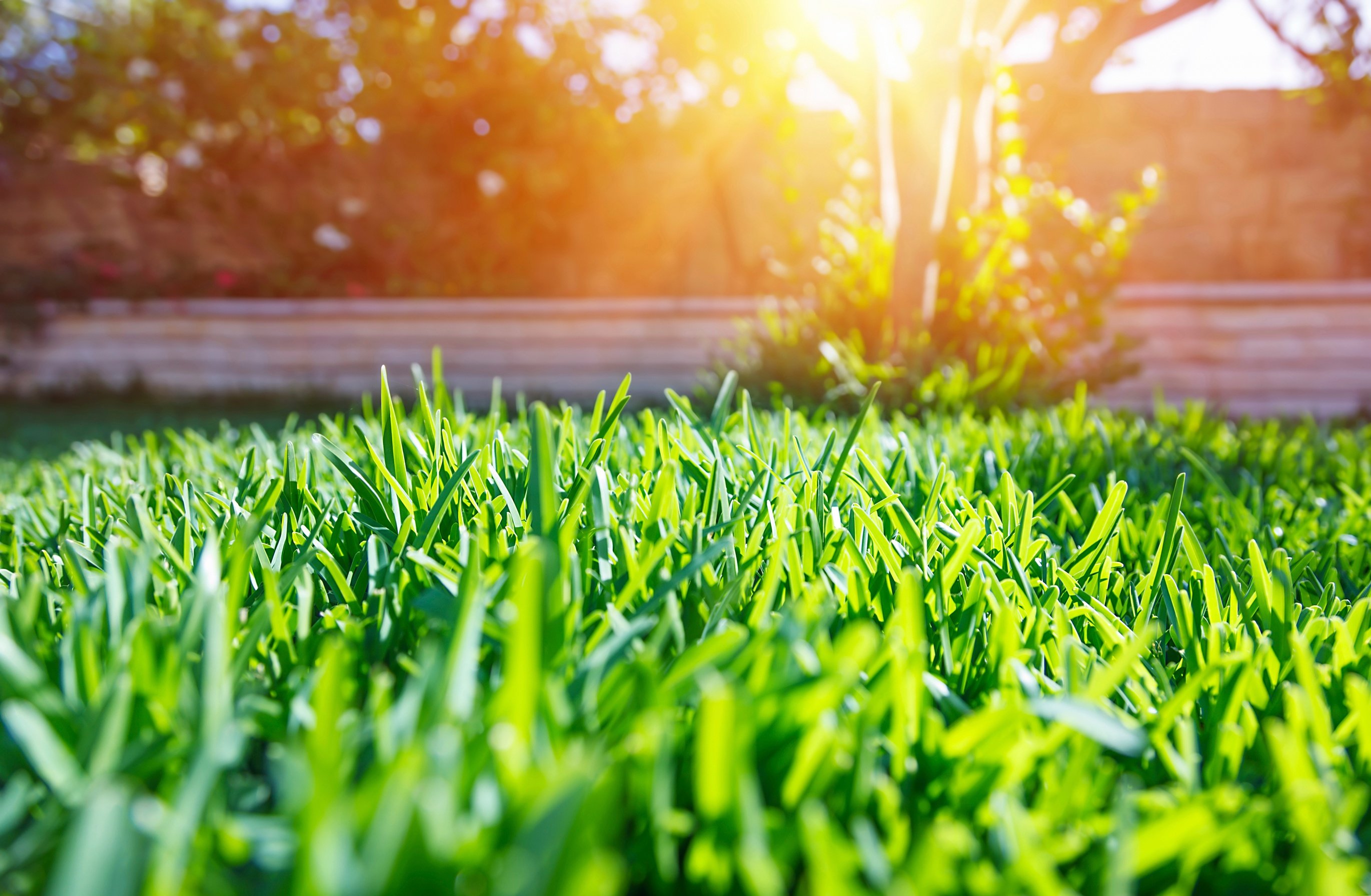
Most homeowners have high expectations for their lawns. We coax and prod life into our lawns regardless of the weather or growing conditions, including the extreme temperatures, traffic, soil type, or drought conditions. Preferably, we want our lawns to stay green with little or no work on our part. Sound unlikely? We think we can get you pretty close to this ideal.
The seasonal change from spring to summer, or the flip-flop weather leading up to summer, is very stressful for your grass. If you understand what the ideal growing conditions for your lawn is, it’s easier to do your best (or let us do it for you) to maintain close to those ideal growing conditions.
The grass varieties grown in Ontario are cool season grasses (fescue, rye, bluegrass, etc.) and they thrive in temperatures in the mid-teens to mid-twenties (60sF). When the weather reaches temperatures above the mid-twenties reliably, your lawn will begin to stress. Your lawn, or portions of it, may begin to turn brown or go dormant until more rain and cooler temperatures arise. In summer seasons where the weather varies a great deal, this adds even more stress to your lawn. The plants will only withstand so many dormant and active shifts before it begins to struggle.
Here are 4 tips to mitigate the seasonal damage on your lawn.
Water Well
Consistent deep watering is essential to avoid your grass going dormant. It’s important that you don’t water too frequently – once a week is likely sufficient. And ensure that the water is reaching the roots of the grass for greatest efficiency. If your lawn has gone brown (dormant), it can be revived with consistent care and watering.
Avoid over watering at night to prevent molds and fungus from blooming.
Resist Summer Fertilizer
The best times to fertilize your lawn are spring and fall where the temperature and rainfall are more favourable to the grass. Promoting new growth in the hot summer months of June, July and August will require a lot more water, new growth always needs additional water to root well, which you will either need to supply or watch the new plants wither in the sun. Wait until a dormant lawn has greened up again to fertilize (usually fall).
Don’t Expect The Impossible
Sometimes our expectations are unreasonable. High-traffic areas, well used foot-paths to the garage, shed, or other spot in the yard, will struggle to stay green in the hot summer months. You can either stay off those paths during the hot summer months to minimize the damage or consider using stones, pavers, or some other material so that you don’t have that unsightly dirt path.
Maintain Weed Control
When the weather gets hot and the lawn flags a little is when weeds, disease and insects can wreak real havoc. Often, these intruders are better equipped to survive the hot dry summer months than your grass and take advantage of the weaker plants to move in. On the bright side, it’s easier to find the green weeds on a brown lawn so you can hand-pull the weeds, or call our experts for a free estimate to get things to rights again.
Summer is when the weeds creeping into your lawn will go to seed ensuring your weed war continues next summer. If you take a break from lawn care over the summer, just know the weeds won’t.
The lawn care experts at Nutri-Lawn Ottawa would love to answer these, and any other questions you might have about your lawn and gardens. Contact Nutri-Lawn Ottawa today to give your lawn the edge over weeds and hot weather this summer






